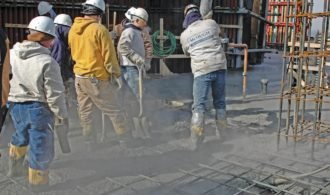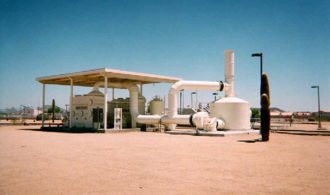Comparing a concrete sealer to the frosting put on a cake sounds a bit frivolous, but in essence, they have some things in common. The frosting is meant to make cakes look better than before and keeps them fresh for a longer time.
Equally, concrete sealers make concrete look better and maintain the good looks for long as well as making them perform well for a longer time. No experienced concrete contractor will install a beautiful floor without using a sealer.
You must remember that no other surface in a building takes more abuse than the floor, whether it is a commercial or industrial building. Floors are typically subjected to every kind of abuse such as impact, chemical attack, and abrasion.
Concrete floors are porous, and they are not made to take the continual abuse. That is why concrete floors require protection regardless of their location.
The question is selecting the appropriate protective floor material depending on the conditions. You need to understand the environment the sealer will perform in; indoors, wet, dry, or outdoors.
Here are factors to consider when selecting a concrete sealer material. However, the article focuses on coatings bonded directly to the surface for a long term; rather than for aesthetical purposes.
Evaluate the surface
For starters, the expert needs to evaluate the existing surface to know what they are working with regarding its current status. The surface should be structurally clean, sound, and should not be contaminated with foreign materials because they could interfere with the bond of the new coating.
The other aspect is finding out if the surface is distressed. The expert should look out for cracks or unevenness. Surface preparation is an important part of the installation process because it is critical to long-term performance.
It is also important to note that new concrete needs proper preparation just like old surfaces.
Consider the performance conditions
There are four major common areas of abuse that typically dictate what flooring system requires. They include:
Impact– heavy loads and direct impact need a thicker or heavier floor system to be able to withstand the pressure or effects of the impact.
Chemical exposure– the type of chemicals and severity of exposure are essential. Concrete materials differ widely in chemical resistance, which makes it necessary to identify the exposure. Constant immersion is more critical than common spills and splash.
Thermal shock– it is important to consider the thermal shock or temperature fluctuation. A thermal shock like steam cleaning of the floor tends to cause a loss of bond from thermal expansion if you fail to choose the material correctly.
The coefficient of expansion of coating systems is usually much higher; therefore, it should be carefully put into consideration when choosing the material to use.
After identifying the degree of severity of the main abuse areas, you then rank them paying attention to the importance of a particular project. It offers a major focus for what is required regarding applied thickness and material.
Other factors
Most times experts tend to overlook other considerations when selecting a floor coating system. The factors are essential when installing a particular system and assuring the satisfaction of the owner. Such factors include:
- Economics
- Life expectancy
- Aesthetics
- Installation parametersThe essence of going through the material selection process is to ensure that you get the proper material. Owners should remember to maintain surfaces to ensure they last for a long time. Make sure you get the right person to carry out the installation process for quality results.




